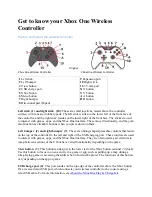
Note:
The ServeRAID-8 series controllers can run multiple synchronizations, at the
expense of an incremental performance decrease. You can modify the
priority of synchronizations from high to low by using the ServeRAID
Manager application or by using the
arcconf setpriority
command to help
balance incoming user workload to synchronization workload.
Upgrading to ServeRAID Manager 9.0 within Microsoft Windows
ServeRAID Manager 9.0 changed a fundamental method that is used to manage
attached storage. In earlier versions 8.00 to 8.40 two components are always
needed to communicate with the storage subsystem. These two components are
the operating-system ARCSAS device driver and the AACMGT.SYS filter driver.
With the ServeRAID Manager 9.0 application, only the latest version of the
operating-system device driver is needed, because the AACMGT filter driver
functions are added to the new device drivers.
On a new installation of ServeRAID Manager 9.0, the filter driver is not installed,
and a restart is not required; however, the management function works only if the
latest ARCSAS driver, which is version 5.2.0.12913, is installed. If an earlier version
of the driver is installed, the ServeRAID Manager application reports a
driver
update is required
message.
If you are upgrading an existing installation of ServeRAID Manager 8.x to version
9.0, the upgrade installation preserves the existing AACMGT filter driver. The new
software uses the existing filter driver to obtain the storage-management data as
needed. This is the only way that ServeRAID Manager 9.0 can manage a system
with an earlier version of the device driver. If the device driver is ever upgraded to
version 5.2.0.12913, ServeRAID Manager 9.0 uses the native storage-management
functions of the new driver.
If it is necessary to upgrade an existing installation of an earlier version of
ServeRAID Manager 8.x, you must first upgrade to ServeRAID Manager 8.40 and
then upgrade to 9.0 to incorporate the broadest support for the ServeRAID 8-series
controllers and the fixes in the later code.
For more information, see the following RETAIN tip.
ServeRAID Manager reports “SAS driver update required”
5073797
in the
Search
field at http://www.ibm.com.)
Synchronization options when you create a new array and the impact
on performance
When you create a new redundant array, three methods are available to
synchronize the data on the new array: QuickInit, AutoSync, and Clear. The initial
synchronization on a new array creates the redundant stripe units that are used to
recover the array if a disk has failed.
The QuickInit option has the least impact on system performance because the
synchronization is done as new write operations are made to the array; however,
the array becomes available to you immediately. The array shows a status of
Impacted until the synchronization is completed. During idle time, the array slowly
synchronizes in the background. QuickInit might take days to several weeks to be
Chapter 1. ServeRAID-8 series best practices and maintenance information
3
Содержание ServeRAID-8 Series
Страница 1: ...ServeRAID 8 Series Best Practices and Maintenance Information...
Страница 2: ......
Страница 3: ...ServeRAID 8 Series Best Practices and Maintenance Information...
Страница 6: ...Index 49 iv ServeRAID 8 Series Best Practices and Maintenance Information...
Страница 41: ...Chapter 1 ServeRAID 8 series best practices and maintenance information 35...
Страница 54: ...48 ServeRAID 8 Series Best Practices and Maintenance Information...
Страница 57: ......
Страница 58: ...Part Number 46M1375 Printed in USA 1P P N 46M1375...










































